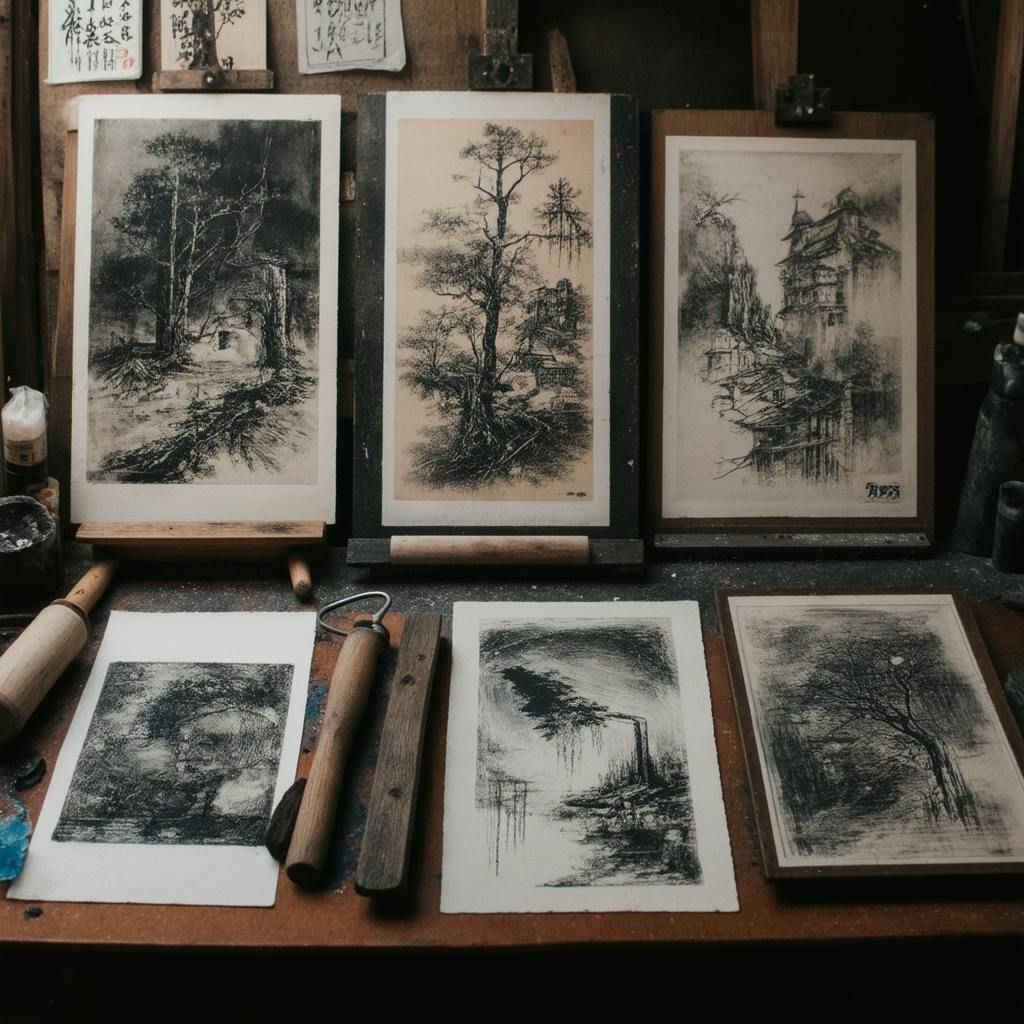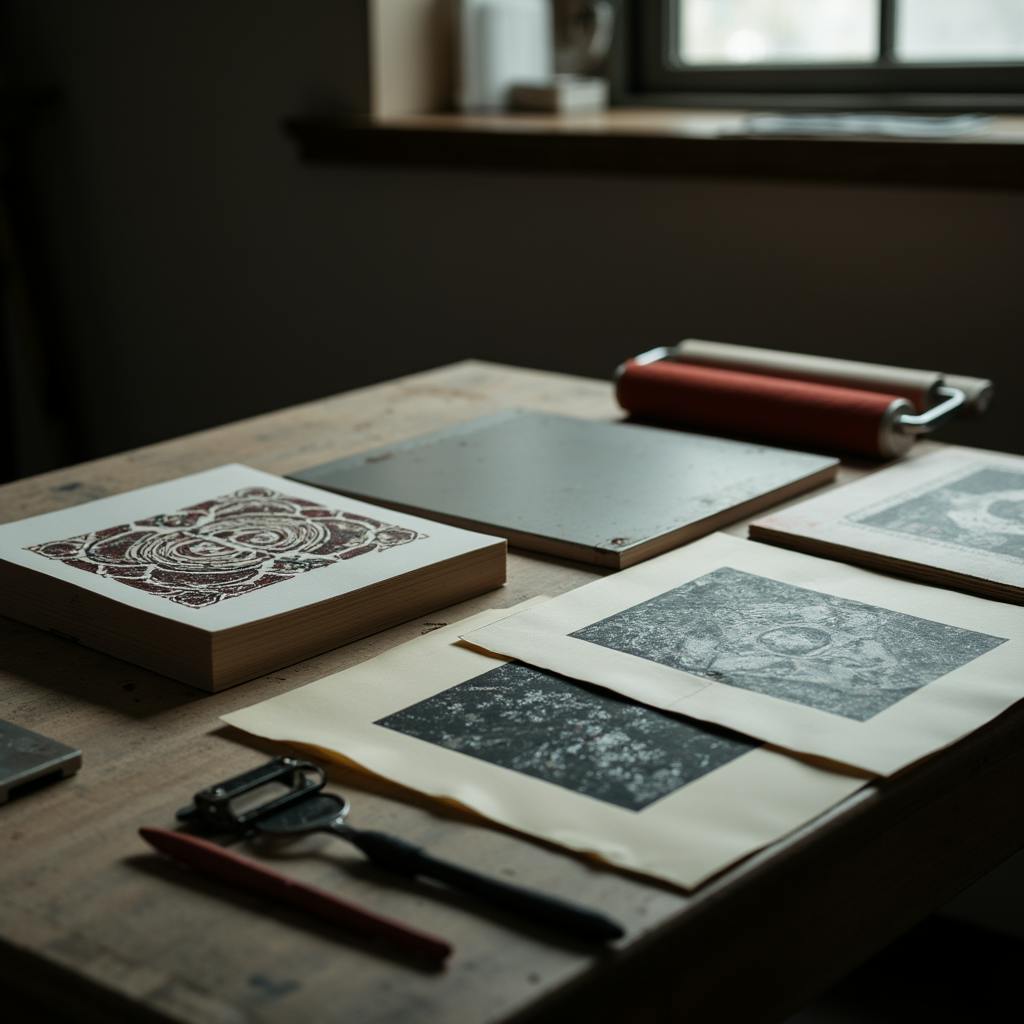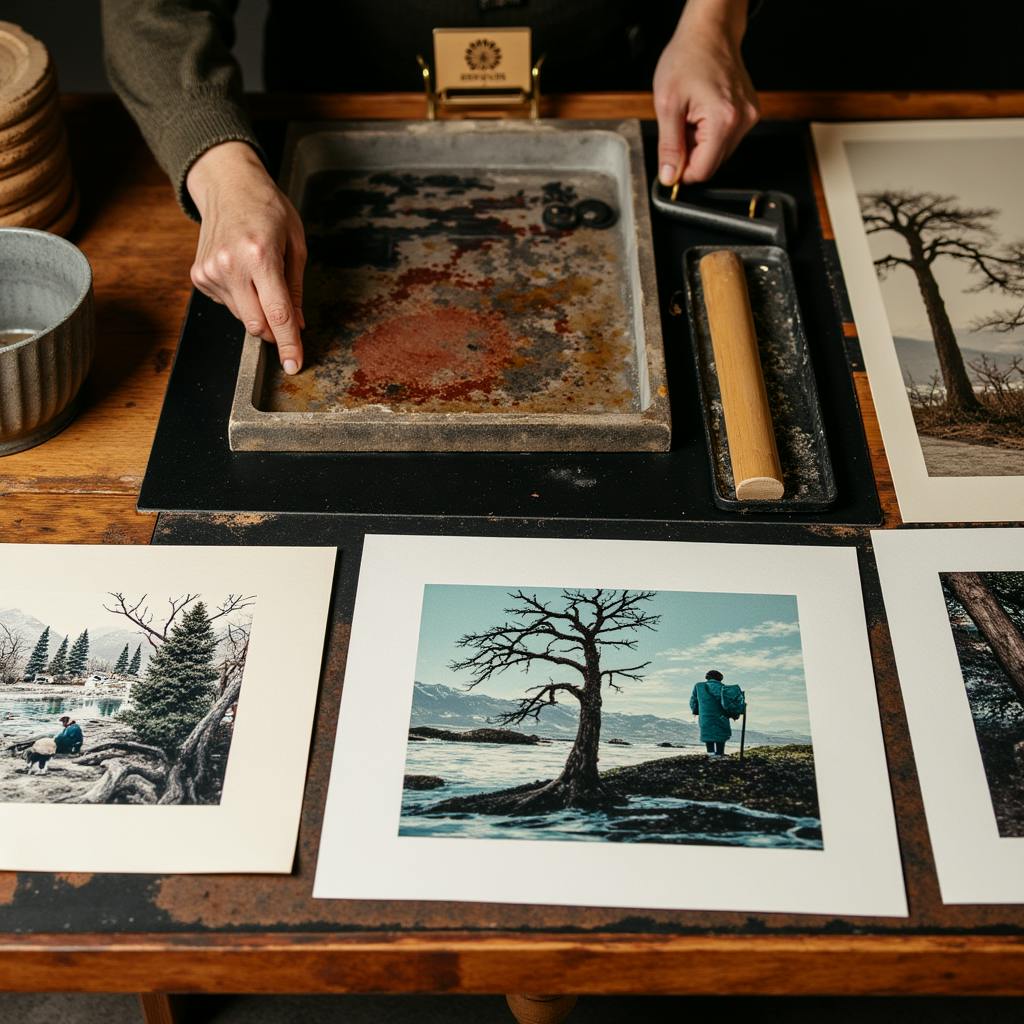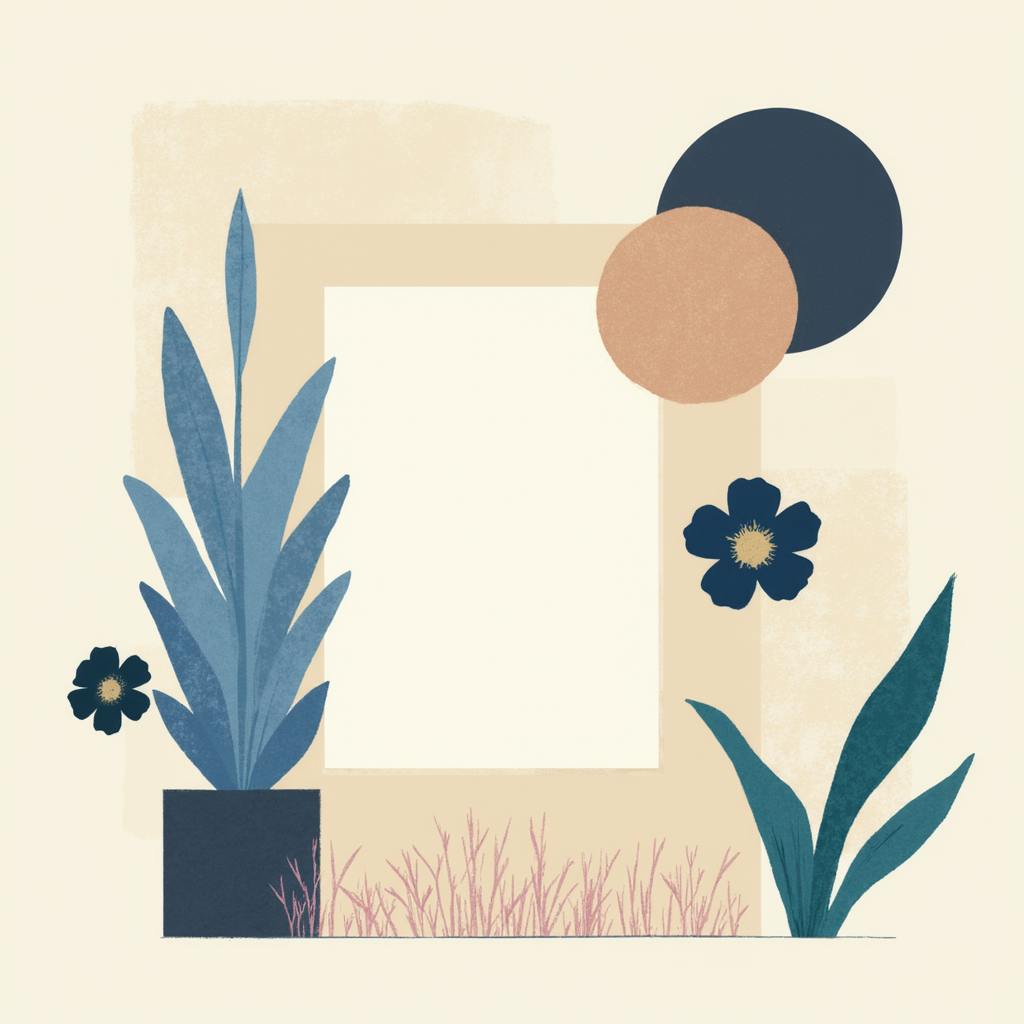Printmaking, an enduring art form with a rich tapestry of history, allows artists to create multiple impressions from an original matrix, be it a metal plate, stone, block of wood, or a screen. Understanding the 'techniques of printmaking' is crucial for any enthusiast or practitioner of this craft. In this comprehensive guide, we will explore various printmaking techniques, shed light on its definition, and unravel the intricate processes that shape this dynamic form of art.
Understanding Printmaking: An Overview
Printmaking is an art form that involves the transfer of ink from a matrix onto a material, typically paper or fabric. Defined by its ability to produce multiple originals, printmaking differs from painting or drawing, where only one unique artwork is produced. The techniques of printmaking encompass a wide array of processes, each offering unique textures, styles, and forms of expression.
Exploring Key Printmaking Techniques
- Relief Printing: In relief printing, artists carve away parts of a surface, such as wood or linoleum, leaving the raised areas to hold ink. This is akin to a stamp. The most common method within this category is woodcut. Relief printing is praised for its bold lines and strong contrasts, making it a favorite for illustrators.
- Intaglio Printing: Intaglio involves engraving or etching an image into a metal plate. Unlike relief printing, where the raised areas are inked, intaglio printing fills the incised lines with ink. Techniques in this category include etching, engraving, drypoint, and mezzotint. Renowned for producing rich textures and tonal depth, intaglio offers artists a profound level of detail.
- Lithography: Lithography relies on the principle that oil and water do not mix. Artists draw directly onto limestone or aluminum plates using a greasy substance. The plate is then treated so that the drawing attracts ink, while the non-image areas repel it. This versatile technique allows for a range of fluid and expressive marks, similar to traditional drawing.
- Screen Printing (Serigraphy): Often associated with commercial applications, screen printing is a technique where ink is pushed through a mesh stencil onto a surface. Each color requires a separate stencil. Known for its vibrant and bold imagery, screen printing has been popularized in the art world by artists like Andy Warhol.
- Collagraphy: A lesser-known but innovative technique, collagraphy involves constructing a collage of materials onto a plate, which is then inked and printed. The versatility of textures and patterns makes collagraphy an exciting exploration of mixed-media within printmaking.

AI made with YK
Frequently Asked Questions in Printmaking Art
What is printmaking art's primary appeal?
The ability to produce editions of artwork enhances accessibility and dissemination. Artists can share their expressions more broadly, unlike singular paintings or drawings.
How does one choose the appropriate printmaking technique?
The choice often depends on the desired aesthetic, texture, and detail. For instance, those seeking detailed lines may prefer intaglio, while bold graphics might lean towards relief or screen printing.
Can printmaking be considered an original art form?
Absolutely. Each print, particularly in limited editions, holds the artist's intention and craft. Variations in impressions mean each print can be unique.
Techniques of Printmaking: A Comprehensive Guide - FAQ
1. What are the different techniques of printmaking featured in the guide?
"Techniques of Printmaking:
A Comprehensive Guide" offers an extensive exploration of the diverse methods employed within the art of printmaking. Among the traditional techniques, the guide covers:
- Relief Printing: This includes woodcut and linocut, where the artist carves an image into a surface and applies ink to the raised areas.
- Intaglio Printing: Techniques such as etching, engraving, drypoint, and mezzotint fall under this category, where the image is incised into a metal plate.
- Lithography: A process that involves drawing with a grease-based medium on a limestone or metal plate and using the repulsion of oil and water to create prints.
- Screen Printing: Also known as serigraphy, this involves creating a stencil on a mesh screen to transfer ink onto various surfaces.
- Monotype and Monoprint: Techniques that produce one-of-a-kind prints by applying ink or paint directly onto a plate, then pressing paper onto it.
Additionally, the guide delves into contemporary techniques, including:
- Digital Printmaking: Utilizing digital tools and software to create prints, often employing inkjet or laser print technologies.
- Photopolymer Plate Printing: A modern adaptation of intaglio printing using light-sensitive polymer plates to create images.
These techniques are examined in depth, offering insights into both their historical origins and their application in contemporary practice.
2. Does 'Techniques of Printmaking: A Comprehensive Guide' cover both traditional and modern printmaking methods?
Yes, the guide offers a holistic approach to the art of printmaking by covering both traditional and modern methods. It is crafted to provide readers with a thorough understanding of how printmaking has evolved over the centuries, from time-honored techniques like woodcut and etching to innovative methods such as digital printmaking and photopolymer plates. This comprehensive coverage ensures that readers gain a rich perspective on the versatility and adaptability of printmaking as an art form.

AI made with YK
3. For what level of experience is 'Techniques of Printmaking: A Comprehensive Guide' suitable?
"Techniques of Printmaking: A Comprehensive Guide"
is intended to cater to a wide range of experience levels. It is designed to be accessible to beginners who are embarking on their printmaking journey, providing foundational knowledge and step-by-step guidance. Intermediate artists will benefit from the more nuanced exploration of techniques and materials, allowing them to refine their skills and expand their repertoire. Advanced practitioners will appreciate the detailed historical context and the exploration of innovative, contemporary methods that can inspire and challenge their practice. Overall, the guide serves as a valuable resource regardless of thereader’s proficiency in printmaking.
4. Does the guide 'Techniques of Printmaking: A Comprehensive Guide' include demonstrations or tutorials?
Yes, the guide is richly supplemented with demonstrations and tutorials that practically illustrate the techniques discussed. Each method is accompanied by visual step-by-step instructions, either through detailed diagrams, photographs, or links to video resources. These demonstrations are intended to enhance understanding by providing clear, practical examples of how each technique is executed. In addition to technique-focused tutorials, the guide also offers project suggestions to encourage experimentation and practice, enabling readers to apply what they learn in a hands-on manner.
This FAQ provides a comprehensive overview of what "Techniques of Printmaking: A Comprehensive Guide" offers, helping prospective readers understand how it can support their learning and creative exploration in the world of printmaking.
Conclusion
Printmaking is a creative universe in itself, defined by its versatile techniques and rich historical roots. From the bold contrasts of relief printing to the nuanced lines of intaglio, from the fluidity of lithography to the vibrance of screen printing, the techniques of printmaking offer a plethora of possibilities for artistic expression. Understanding these methods not only enriches appreciation but also inspires deeper creative exploration. Whether viewed as a historical artifact or a contemporary art piece, printmaking continues to captivate artists and audiences alike, underscoring its timeless appeal and enduring relevance.

